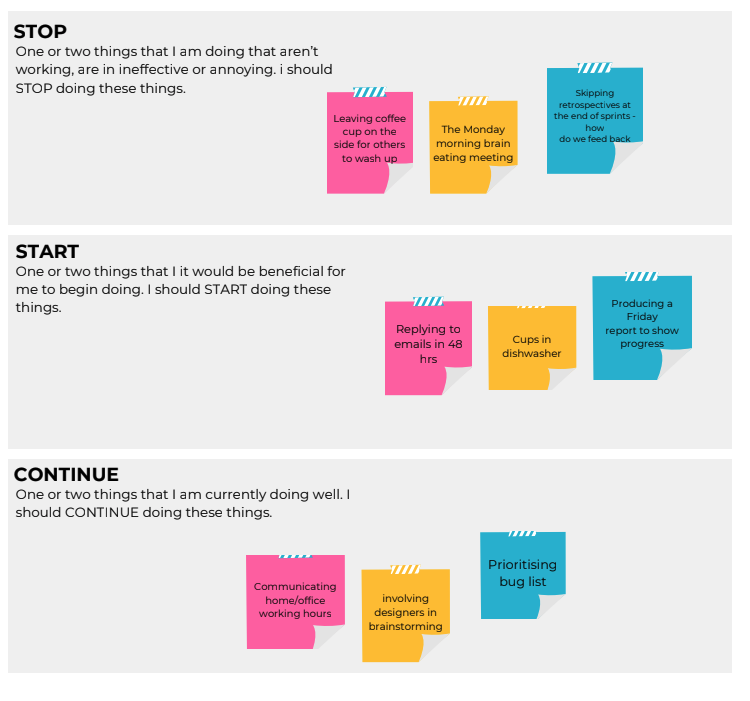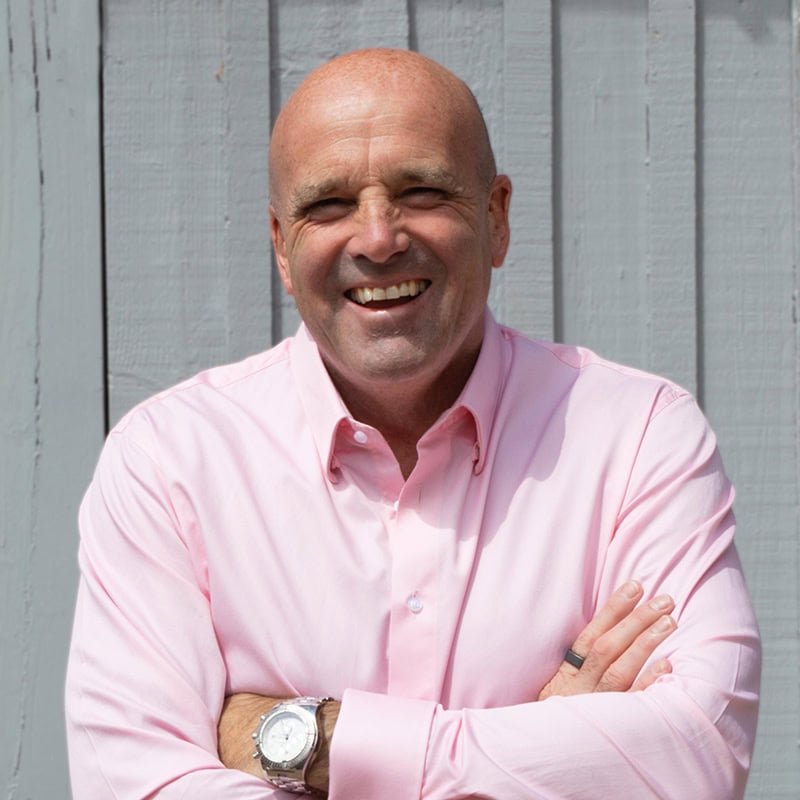Quick Summary
Takeaways
-
A business that relies on you for every decision will never scale beyond your personal capacity.
-
Strong leadership teams don’t appear by accident—they’re built, coached, and held accountable.
-
Replacing weak links in your exec team is essential to freeing yourself for strategy and growth.
-
Investing in leadership is a strategic move that drives better decisions, culture, and long-term results.
Ever dream of running your business in just two days a week while it continues to grow? Sounds too good to be true, right?
But that’s exactly the lifestyle I’m crafting for founder-CEOs. The premise is simple: make yourself operationally redundant as CEO so the company runs smoothly without you. In other words, build a leadership team so capable that you can confidently step back. Hell, build one so good you can even bugger off for a few days without returning to carnage and confusion.
I honestly can’t think why anyone would want to stay buried in the operational detail of the business they started. You began with a dream, a vision. There were big things you wanted to change, challenges you wanted to tackle. To find yourself spending 40 hours (or more, in many cases) micromanaging people who are being paid more than enough to make their own decisions, to be unable to step away or even take proper holidays – that’s not success. It’s a hostage situation with spreadsheets.
Freeing up three days a week doesn’t mean you’ll be spending that time sipping champers in the hot tub (though you could do if you wanted to, of course). It’s about freeing up time to be the thinker, the leader, the strategist that your company needs to reach the next level. You’ll free yourself to decide on your own direction – develop a portfolio of companies, launch a spin-out organisation in an area that interests you or shows promise, or focus on landing big partnership deals.
To give one example, I’m working with a pair of founders who have succeeded in freeing themselves up so they can focus on landing an account worth around £10 million, something their sales team would never be able to pull off alone. In short, whatever you want to do, you need to free yourself up to do it – and that starts by having a leadership team that doesn’t need you.
Why leadership development is non-negotiable
So many founder-CEOs get this badly wrong. They assume their leadership team’s solid because no one’s actively screwing up. And they buy into this nonsense that it’s each leader’s job to sort their own department. Bollocks. It’s your job as CEO to raise the standard of the leadership team itself. That means coaching them up—or binning the ones who’ve hit their ceiling and bringing in someone who can take you to new heights. Because if they can’t grow with the business, they’re holding it back.
I’ve seen founders throw cash at shiny growth hacks while their leadership team crumbles underneath them. It’s like building a skyscraper on sand—doesn’t matter how high you go, it’s coming down. Trusting last year’s skills to survive next year’s chaos? That’s not strategy. That’s complacency, and a one-way ticket to irrelevance.
Leadership is your growth engine. When you invest in making your leaders stronger, you’re investing in better decisions, tighter execution, a healthier culture, and higher retention across the board. This isn’t touchy-feely HR crap; it’s a strategic growth move. Companies with highly engaged leadership teams are 2.3X more likely to outperform their peers in revenue growth. Coincidence? Come on, you’re smarter than that.
And if you think you’re off the hook from all this as the CEO – give your head a wobble. The best CEOs I know are insatiable learners. You’re not just the Chief Executive Officer; you’ve got to be the Chief Example Officer. Show your team what personal growth looks like. If you strut around the office with a superior attitude, giving off vibes that you’re the finished article and the perfection to which all others should aspire then guess what – ego and complacency is going to flood every part of every department before you even realise it. Success starts at the top, but so does failure. Make sure you’re on the right side of that scenario.
Build a team that runs the business without you
Many founders are control freaks – there, I said it. You’ve built this company from nothing, and your fingerprints are on every part of it. But here’s the painful irony: as long as everything depends on you, your business can’t grow past a certain point. You become the biggest bottleneck. As Jeff Hoffman (founder of booking.com) bluntly told me, “You can’t scale until you can get out of the way. And you can’t get out of the way until you can trust people.”
Start by taking a long, hard look at your current leadership team. Are they truly up to the task of running the business day-to-day without you? Would you enthusiastically rehire them tomorrow to do the job you need them to do for the next 12 months? If one of them handed their notice in tomorrow, would you pull out all the stops to change their mind or simply breathe a sigh of relief that the decision was taken out of your hands? Be honest. If any one of them isn’t pulling their weight, you’re stuck babysitting or firefighting in that function, and your freedom as CEO evaporates. You need to be almost fanatical about getting A-players into every executive seat. A single weak link in the exec team will drag the whole company down.

Building a self-sufficient leadership team also means hard conversations and high standards. If someone isn’t cutting it, address it now, not next year. And for heaven’s sake, cultivate a culture of feedback and accountability within your exec team. Many CEOs shy away from frank feedback – it’s uncomfortable, feelings might get hurt. Balls to that. Avoiding those discussions is far more dangerous and until you’re willing to face that, you’re simply not ready to grow your business properly.
Accountability is crucial because it enables you to work strategically, not stuck holding others to task. You need to stop being the star striker scoring all the goals yourself, and instead become the manager or sporting director, scouring the transfer market to find the right players to help you plan for the future.
The end goal is an executive team that functions without your constant input – a team of people who take ownership, hold each other accountable, and don’t need to run to mummy or daddy for every decision.
Tools and practices to develop your leadership muscle
So you want a team that actually leads, not one that waits for your approval like nervous interns? Good. Because if you’re serious about becoming a two-day-a-week CEO, your leadership team needs to do more than show up to meetings and nod along. They need to step up, take ownership, and run the business with you—not for you, and definitely not against you. That doesn’t happen by accident. It takes structure, feedback, accountability, and (brace yourself) some uncomfortable conversations. Here’s are some the ways I coach CEOs to do it.
“Start, stop, continue” feedback:
One of the simplest but most powerful exercises I run with exec teams is a Start/Stop/Continue session. Each team member gets actionable input on what to start doing, what to stop doing, and what to continue, all coming from their peers. The beauty of this tool is that it normalises feedback and builds tremendous psychological safety over time. High-performing teams – true A-players – actually crave this kind of feedback to get even better. (It’s usually the B or C-players who bristle at honest feedback – a useful tell in itself.)

Quarterly off-sites and meeting rhythm
If you’re “too busy” to pull your team off the battlefield for strategic thinking, that’s exactly why you must do it. I run into founders who haven’t had a proper management off-site in over a year, and they wear it like a badge of honour: “We’re too focused on the day-to-day.” Meanwhile their rivals are taking a step back, gaining perspective, and planning their business around the challenges that tomorrow will bring.
Regular off-site retreats force you and your leaders to step back and work on the business instead of in it. In just a day or two away from the norm, magic happens: your team shifts from reactive to proactive, from narrow functional silos to big-picture thinking. The perfect solution for one department’s problem is often sitting in the head of someone in a completely different team – but if you don’t share information, you’re never going to find it.
Target operating model (TOM) exercise
Want to pinpoint exactly where your business is weak or broken? Map it out. We get the whole exec team in a room and draw a high-level map of how the company makes money from end to end. Then we go function by function and ask the team to rate each part Red, Amber, or Green.
This exercise shines a light on the real choke points in your value chain and builds shared accountability around fixing them. The rule is simple: don’t waste a second on green – attack the reds first. It forces your leaders to stop thinking like department heads and start operating as one team focused on the business’s biggest constraint.
Hire (and fire) to build an A-player team
We often start engagements by rating every exec team member as an A, B, or C-player. If even one is a C (or a B-minus who’s always overwhelmed), that’s a problem. Your company will never outgrow the leadership team’s capabilities – period.
As the saying goes, “A players hire A players; B players hire C players.” Tolerate B or C performance in your exec ranks and you’ll soon have mediocrity multiplying down the org chart. The goal is a team of executives who proactively run their domains and collaboratively drive the company forward – freeing you to focus on the future, not fight fires from the past.
Get a coach or mentor (yes, you too)
Finally, remember that you don’t have to go it alone. A great CEO mentor or coach can be the secret sauce to accelerate your leadership development and keep you accountable to building that self-managing team. The higher up you are, the fewer people within your company can truly challenge you. No that’s not a plug (okay, maybe it is a LITTLE bit of a plug). Yes I’m biased but having that wider outside perspective is invaluable. The higher you go, the fewer people in your company can truly challenge you, and no-one every achieved anything while sitting in their comfort zone. Find someone you trust who can help you leave yours.
Step up or step aside
Here’s the bottom line: If you want the freedom to run your company in two days a week, earn it. Earn it by relentlessly building a leadership team that can kick ass even when you’re not in the room. Develop them, challenge them, and yes, occasionally get out of their bloody way.
This isn’t some luxury or “nice-to-have” initiative to consider when you have spare time. It’s mission-critical. Every day you delay investing in your leaders is a day you’re choosing to carry a weight you should be handing off.
So I have a challenge for you (you knew this was coming). Will you strengthen the steel of your organisation now, or wait to patch the cracks later when it all starts breaking? You can keep telling yourself you’re “too busy” to work on this, or that your team will magically level up on their own. Meanwhile, some other CEO is grooming your future hire because you couldn’t be arsed.
On the flip side, picture this: a year or two from now, your business is hitting record results, your teams are executing with minimal oversight, and you’re spending your freed-up days on strategy, innovation, or maybe just with your family. Future-You wants to jump in a time machine and high-five present-you for having the guts to put in the work.
No more excuses. No more “I’ll focus on the team after the next big client win or product launch.” If you truly want a scalable business and a life, then double down on your leaders today. Push them, train them, trust them. Burn the hero-complex cape you’ve been wearing and let your team step up.
This is how you leap from being the overworked hub of the wheel to becoming the strategic guide who occasionally checks in on a well-oiled machine. It’s how you go from 7-day grind to Two-Day CEO.
Are you in? Good. It’s time to build the team that can run the business without you. Lead like you mean it. Set the bar, raise the standard, and then get the hell out of the way. Because if everything still depends on you, you’re not leading—you’re babysitting.
Written by business coach and leadership coaching expert Dominic Monkhouse. You can order your free copy of his book, Mind Your F**king Business here.

